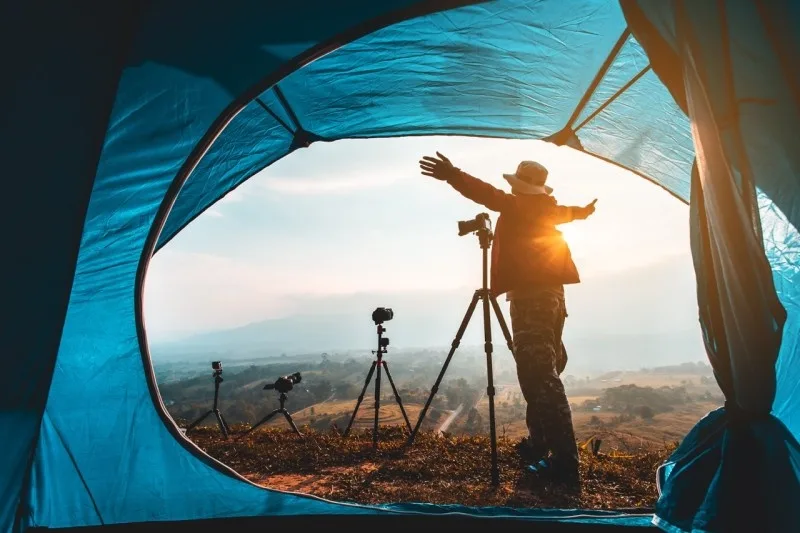If you’ve ever wrestled with picking a travel-friendly tripod that can take a beating yet remain light enough to carry anywhere, you know it can get complicated.
Even a seasoned hobbyist can get dizzy comparing load capacity, folded length, and head types—never mind if you shoot both photo and video.
Add in the fact that many tripods on the market tend to be suspiciously similar, and it’s no wonder we spend hours hunting online.
In this post, I’m going in-depth on the best travel tripods for 2025.
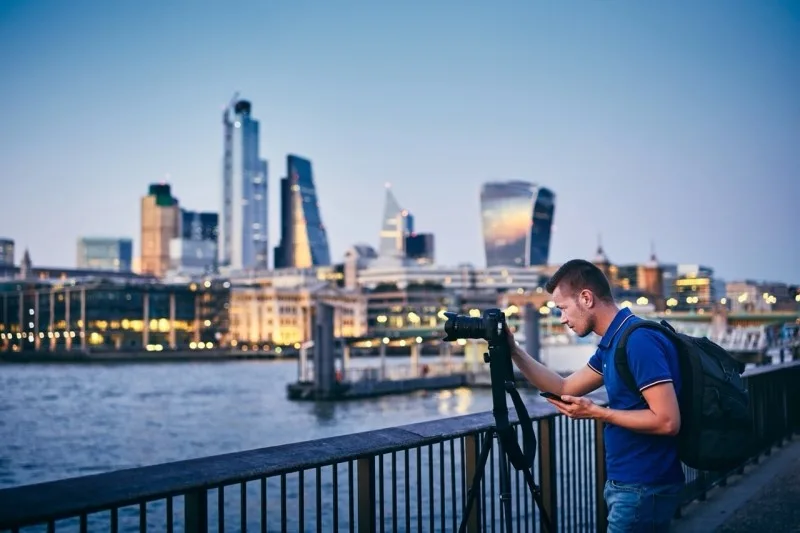
I’ll categorize them based on who I think they suit best—amateur photographers/videographers, influencers or TikTokers, professional photographers, and pro filmmakers.
We’ll discuss each group’s priorities (from weight and affordability to advanced stability and fluid video heads) and lay out the tripods that work well for each.
This way, you can zero in on the ideal pick, whether you’re filming your first city vlog or shooting a commercial with a telephoto lens.
Let’s dive in!
What Makes a Good Travel Tripod?
When traveling around—be it to a local state park, an urban exploration mission, or an international flight—carrying gear is always a balancing act. You want stable support without lugging around an enormous stand. Travel tripods aim to solve that tension.
Typically, they weigh between 2-4 lbs (0.9-1.8 kg) and fold down small enough to fit in or alongside a backpack.
However, many tripods out there are “travel” only in name: they might still be too bulky or weigh 5+ lbs (2.3+ kg) once you add a fluid head.
Others are super light but rattle or wobble if a light breeze hits. A great travel tripod has to be that sweet spot: strong, portable, quick to set up, and easy to maintain.
And if you’re shooting advanced video, you also need a head that can handle smooth panning and tilting.
Let’s break down some essential traits to look for:
- Weight Capacity: Ensure the tripod can safely hold your heaviest combo (camera + lens + mic + accessories). Marketing specs can be optimistic, so aim higher than your actual load.
- Folded Length: Look for lengths around 15-20 inches (38-51 cm) if you want it to fit in or attach to your camera bag (some even go down to 14 inches (36 cm)). Shorter folded length typically means more leg sections, which can be less stable. We’ll discuss trade-offs!
- Build Material: Aluminum is cheaper but heavier; carbon fiber is lighter and can dampen vibrations better, but expect a higher price tag.
- Lock Type: Flip locks or twist locks: a personal preference. Flip locks can be faster but sometimes bulkier. Twist locks can be more streamlined but might require occasional maintenance in sandy or dusty conditions.
- Head Design: Ball head or fluid head? For serious videographers, a fluid head is almost mandatory. For photography, a ball head is typically enough—unless you want extremely precise control like a 3-way pan-tilt head.
- Extras: Hooks under the center column help stabilize the tripod by letting you hang your bag. Some tripods have hidden phone holders or removable legs to transform into a monopod.
With those basics in mind, let’s group the best travel tripods into four main categories based on user needs.
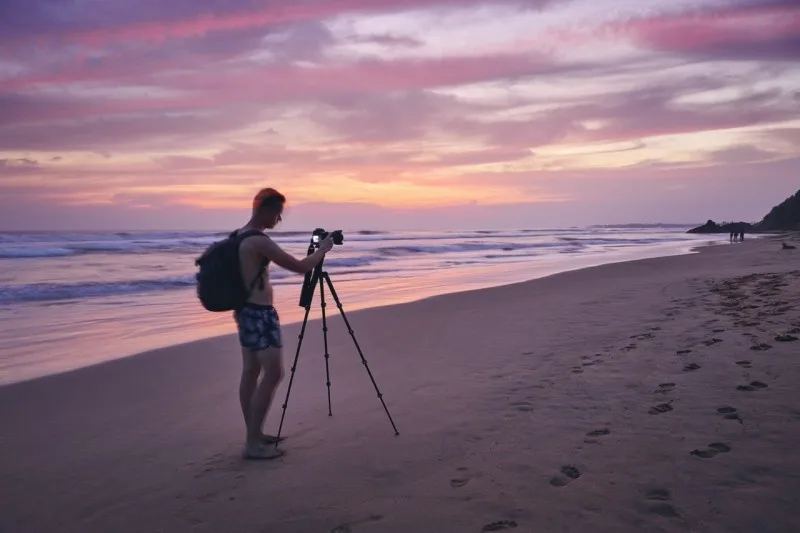
1. Travel Tripods for Amateur Photographers/Videographers
When you’re just starting out or capturing mostly casual footage and images—like family events, scenic hikes, or short vlogs—you generally want something affordable but not so cheap it wobbles.
Maybe your camera is an entry-level DSLR or a small mirrorless.
Often, the biggest lens you’ll use is a kit zoom or maybe a small telephoto. The key is reliability at a good price.
Here are some picks that shine in that beginner-friendly space.
Neewer Carbon Fiber Travel Tripod
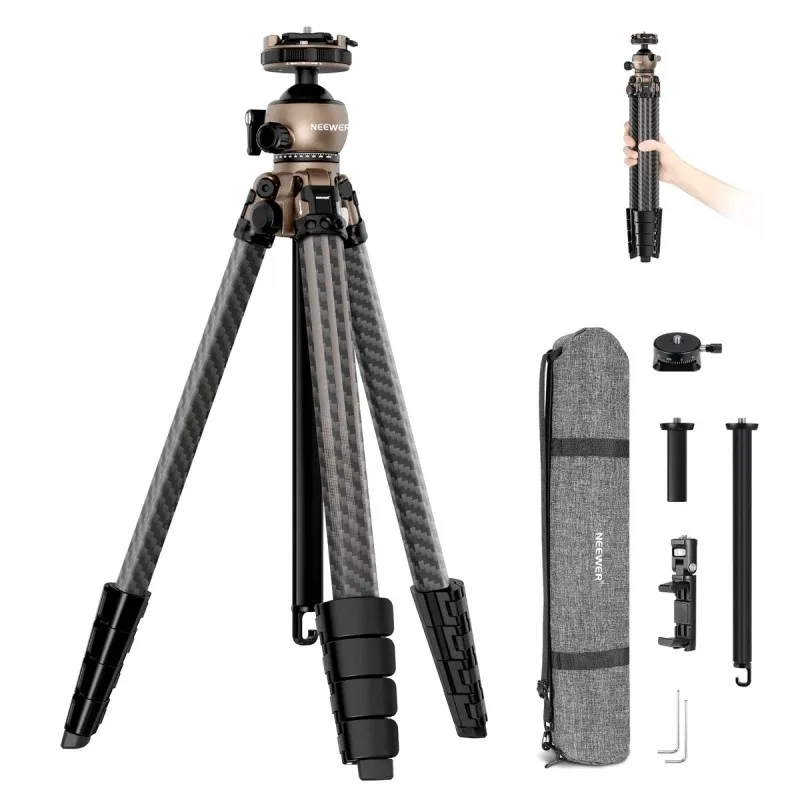
Neewer has staked out a big share of the “budget but decent” market. One of their carbon fiber tripods stands out for delivering stability, a decent ball head, and a small folded profile.
Many amateur users find they can set it up quickly and easily, with a load capacity that can handle small DSLRs, mirrorless cameras, or even mid-sized lenses up to about 300mm—though always be careful if you’re using bigger telephotos.
- Height Range: Typically 17-60 inches (43-152 cm).
- Weight: Around 2.5 to 3 lbs (1.13-1.36 kg).
- Price Point: $80-$130, depending on sales or included heads.
- Recommended For: Low-intensity shoots, day trips, or general hobby photography. Good for selfies, group photos, or scenic landscapes in decent light.
Why Not Great for More Serious Video? The included ball head is okay for static shots, but if you need fluid pans, you may find it jumpy.
However, for amateurs shooting a quick clip or time-lapse, it’s more than fine.
ULANZI Ombra / ULANZI MT Series
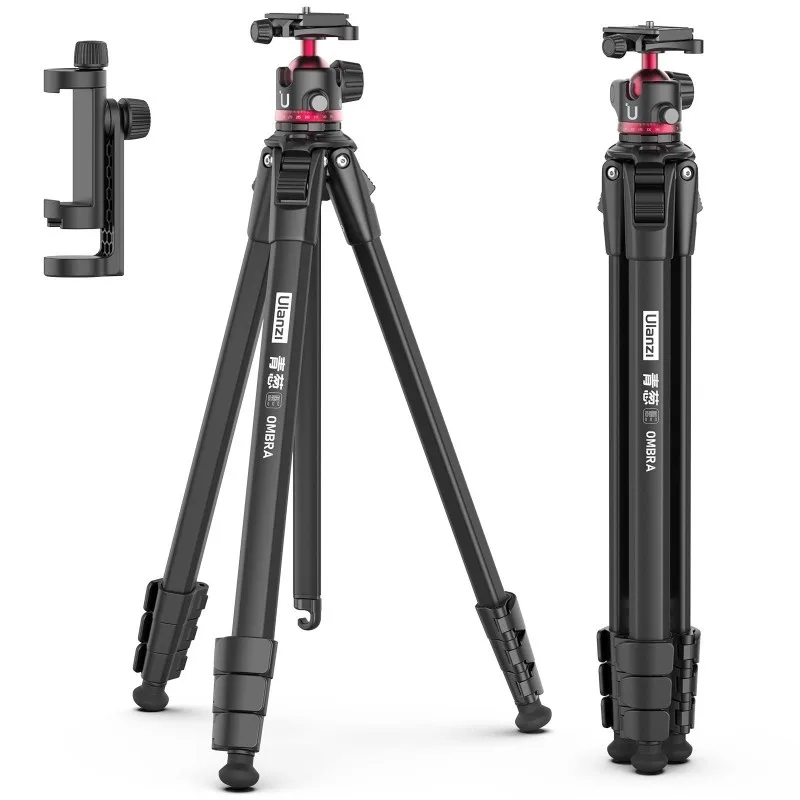
ULANZI’s names keep shifting, but they produce some popular “premium budget” tripods in both aluminum and carbon fiber.
Their main advantage is the size-to-weight ratio. Some of these models fold down surprisingly short—great if you’re stuffing everything into a small camera bag.
The ball head is typically plastic on the outside but metal on the inside. If you only shoot with a smaller camera, that’s typically enough grip.
- Pros: Low cost, very compact, includes a center column that can pivot or invert for macro or low-angle shots.
- Cons: More plastic parts than pricier tripods. If you’re rough on gear, or if you’re traveling to windy beaches or rocky terrain, you might want something more robust.
- Ideal User: A casual photographer traveling on foot or in carry-on flights, wanting a quick, small support solution.
Video Usability
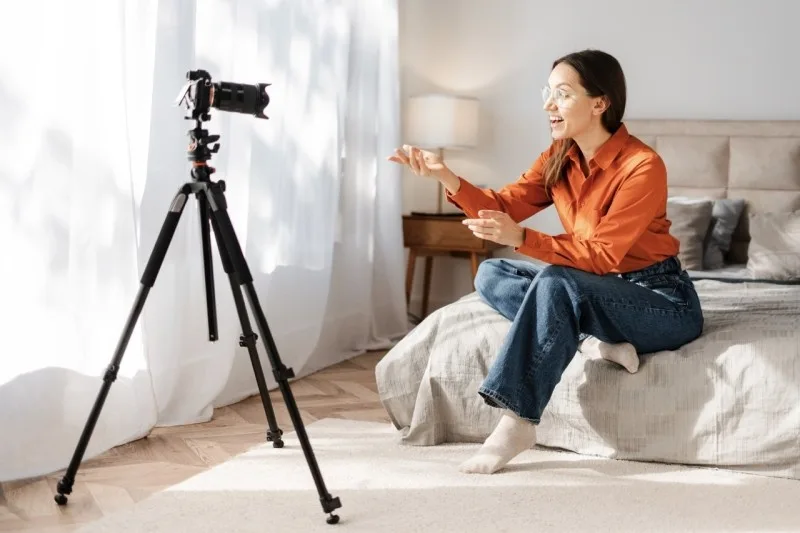
If your video is basically you speaking to the camera or doing stable B-roll, it’s suitable.
For smooth pans or complex motion, not so much. You might swap the head for a lightweight fluid head to improve results.
But overall, it’s a sweet pick for quick, mostly static filming on the go.
SmallRig Travel Tripod Series
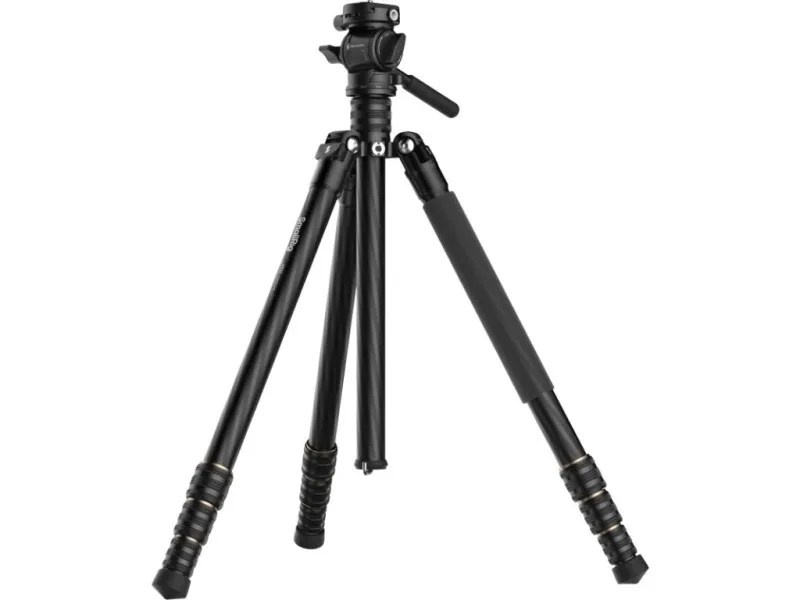
Although SmallRig is usually known for cages and rig components, they also offer travel tripods.
Some models come with a removable leg that can turn into a monopod—a neat feature if you also do sports or wildlife where you want to rest a lens quickly.
The overall stability is fair for a small kit, but heavier lenses may push it to the limit. Pricing is typically in the $100-$180 bracket.
- Material: Often carbon fiber or aluminum variations.
- Leg Locks: Flip locks or twist locks, some are plastic. Keep an eye on wear.
- Height: Generally extends to around 60 inches (152 cm) with the center column up.
- Unique Feature: Detachable leg for a quick monopod, plus a decent ball head with friction control on some models.
Should Amateurs Worry About Load Capacity?
Yes—but not overly so.
If you shoot with a smaller mirrorless camera and kit lens, you’re nowhere near the risk of maxing out a 17-22 lb (7.7-10 kg) capacity.
However, consider how stable that capacity is when extended.
Try to keep the center column as low as possible or weigh it down using the underside hook to prevent accidental tip-overs in wind or on uneven ground.
2. Travel Tripods for Influencers, Vloggers, and TikTokers
Creators who juggle short clips for Reels, vertical video for TikTok, plus horizontal content for YouTube or portfolio sites often have unique needs.
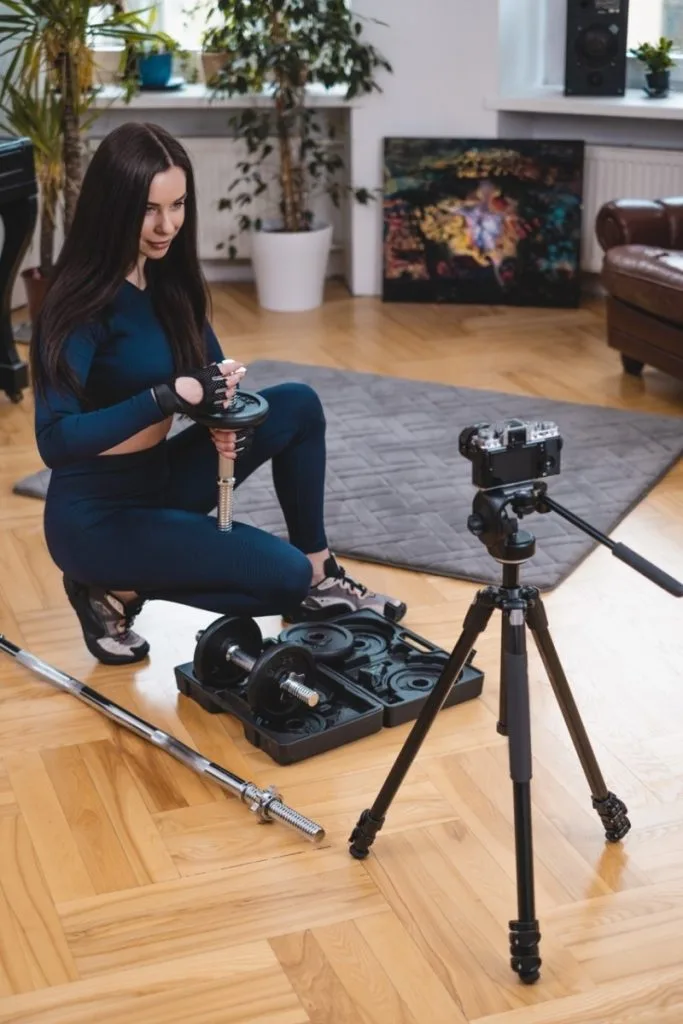
Speed, easy orientation change, and minimal fuss are top priorities.
If you’re pulling a tripod in and out of a backpack multiple times a day while exploring city streets, you want it to be compact and quick to deploy.
Let’s see which stand out.
Peak Design Travel Tripod (Aluminum or Carbon Fiber)
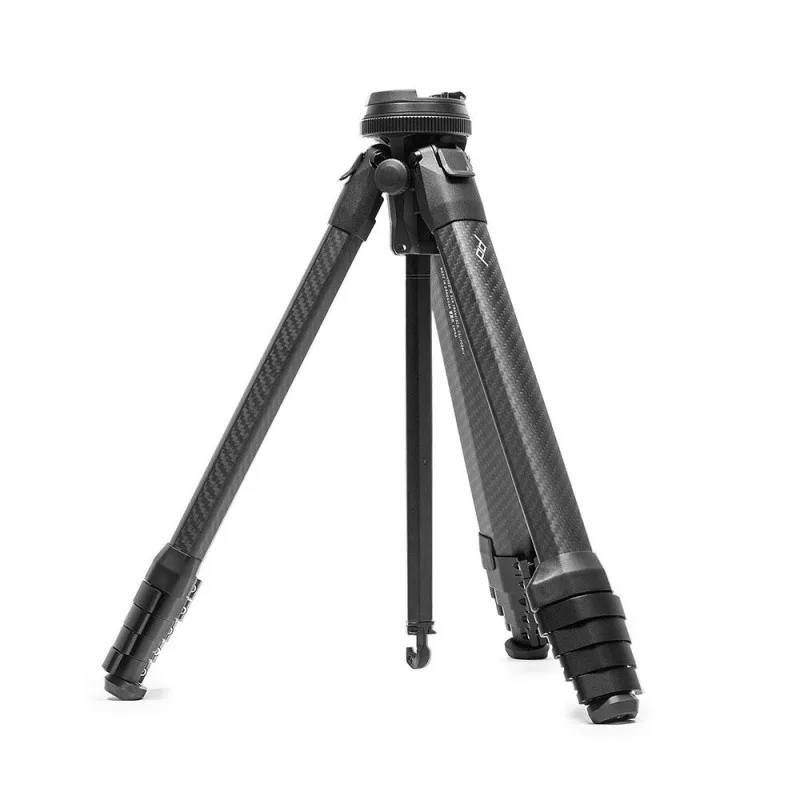
Peak Design has garnered a near-legendary status among travel-loving photographers and vloggers.
Their travel tripod design is incredibly slim, thanks to a triangular center column that allows the legs to fold in with minimal wasted space.
Slide it into a water bottle pocket of your backpack, and you’ll barely notice it’s there.
- Folded Length: Around 15.2 to 15.7 inches (38.6 to 39.9 cm), extremely compact for a full-height tripod.
- Weight: 2.8 lbs (1.27 kg) (carbon fiber version is lighter, but the aluminum is cheaper).
- Phone Mount: Hidden in the center column on some models, perfect for quick phone vlogs or behind-the-scenes shots.
- Ball Head Design: Sleek but can be fiddly if you want full fluid panning. Some folks swap it out or adapt a different head if they do a lot of complex video moves.
Pro Tip: If you find the standard ball head limiting for tilt or vertical shooting, consider an adapter that lets you use a compact fluid head.
But overall, this is a top pick for content creators who want a stylish, minimal footprint tripod they can set up fast.
Manfrotto BeFree Series
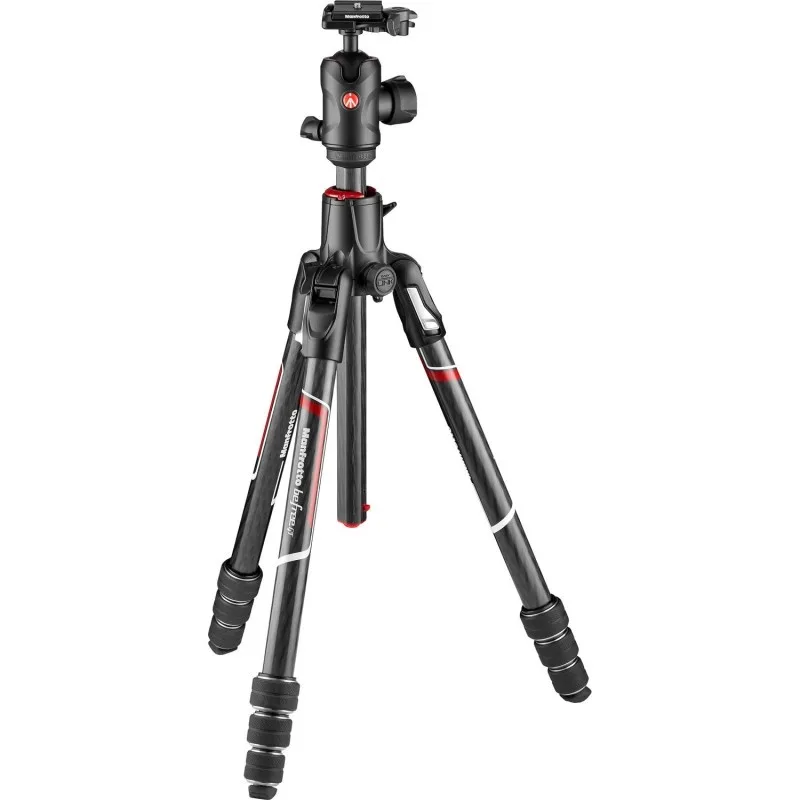
Manfrotto is a staple brand in tripod-land, and their BeFree line is beloved by many vloggers and influencers.
The tripods fold down to around 16 inches (40.6 cm), weigh around 2.4-3 lbs (1.09-1.36 kg), and come with a decent ball head or sometimes a small fluid head if you buy the “Live” version.
The center column is short enough to keep everything fairly compact, though not as slim as the Peak Design.
Still, it’s quite portable.
- Build: Aluminum or carbon fiber choices exist. Carbon fiber costs more but is lighter.
- Head Options: You can choose a ball head (BeFree Advanced) or a fluid head (BeFree Live). For vertical videos, there’s an easy side tilt. The fluid head is small but workable for short pans.
- Who Should Get It? Anyone who wants a recognized brand, robust build, and a decent travel size for regular use—like daily vlogs or quick interviews for social channels.
Ulanzi/Coman Video Tripod with Small Fluid Head
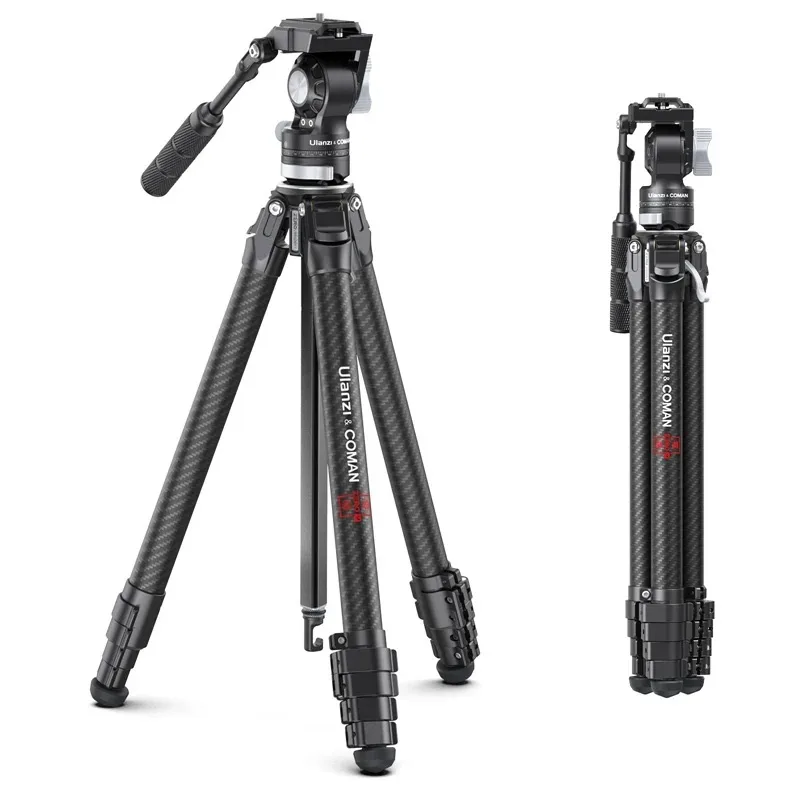
Ulanzi has also introduced lines specifically aimed at vloggers who want slightly better video panning than a basic ball head offers.
If you’re consistently capturing short reels, tilt or pan moves for cinematic B-roll, a small fluid head can help.
These tripods remain relatively light (often around 2.5-3.5 lbs (1.13-1.58 kg) total) and fold to a neat length.
Some incorporate a twist lock with triangular center columns, mimicking more expensive designs for half the price.
Heads-Up: While better than a standard ball head, don’t expect the same damping as a full professional fluid head.
Still, for quick influencer content, it’s more than adequate—and usually more affordable than the bigger brands.
Great for walk-and-talk vlogging or quick B-roll in a café or local attraction.
3. Travel Tripods for Professional Photographers
Stepping up to the pro level, you probably care less about shaving every gram of weight and more about stable performance, especially if you shoot long exposures, advanced panoramas, or use heavier lens setups (e.g., a 70-200mm f/2.8 or even a 150-600mm).
Carbon fiber is almost a must for durability and vibration absorption. Let’s explore which heavy hitters deliver pro-grade results in a portable package.
Sirui 254 or 2204 Series with K20 or Similar Ball Head
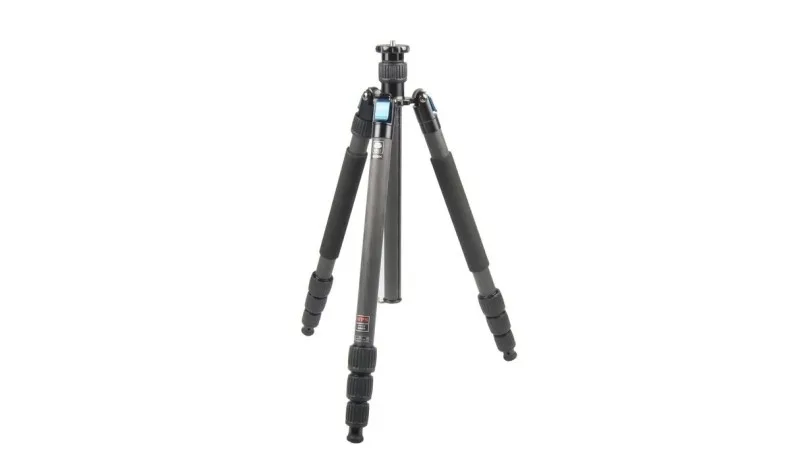
Sirui has built a reputation for making great carbon fiber tripods that punch above their price. The 254 and 2204 lines are prime examples.
Many pro photographers find these stable enough for serious landscape and cityscape shots—especially if you keep the center column down in high-wind situations.
They typically weigh 2.5-3.5 lbs (1.13-1.58 kg) and fold down to 16-18 inches (41-46 cm).
- Ball Head Quality: The K20 ball head is a favorite for its friction control, bubble levels, and reliable hold for heavier setups. Some variants come with a smaller head or a simpler clamp—check carefully.
- Leg Locks: Twist locks that can be disassembled for cleaning if you shoot on sandy beaches or in dusty deserts. Many users appreciate that they can fine-tune lock tension over time.
- Why It’s Beloved: Solid build, easy to maintain, stable enough for typical pro mirrorless or DSLR gear, and a fair price (~$200-$300). Also, many have a leg that detaches into a monopod for those who want quick mobility in some shoots.
Extra Tip: If you often shoot very low angle, look for the short or detachable center column.
That allows the tripod to go nearly flat on the ground for macro or creative vantage points.
This is especially helpful for landscape shooters working with wide angles and foreground interest.
Leofoto LS or Ranger Series (e.g., LS-254C, LS-284C)
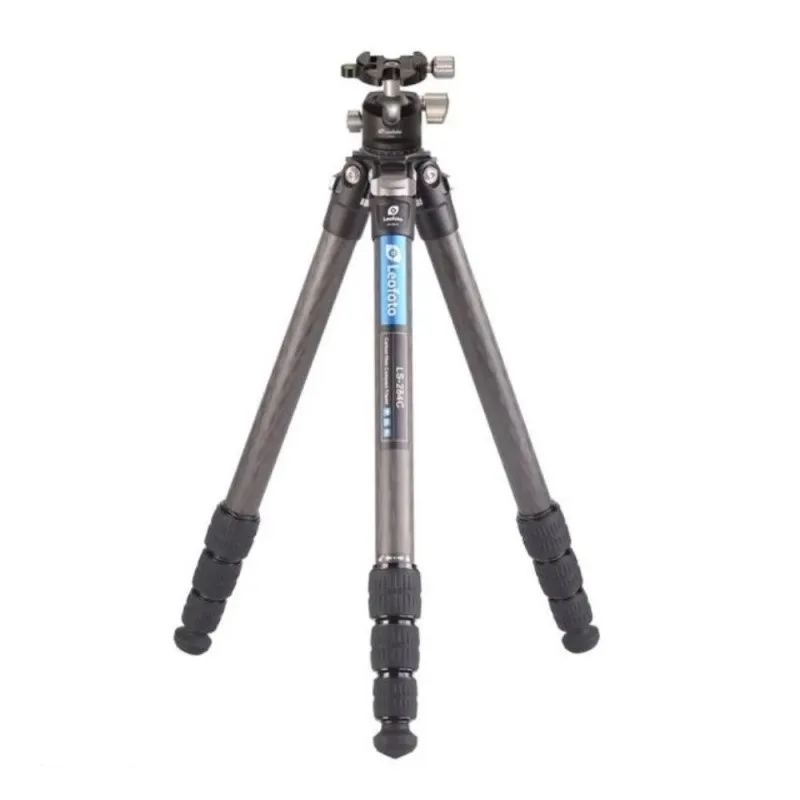
Leofoto has carved out a loyal following by producing Gitzo-like tripods at more approachable prices.
Their LS or Ranger lines use high-grade carbon fiber, robust twist locks, and large top plate diameters for better load distribution.
The ball heads that come in their kits vary, but some are quite advanced with separate friction and pan controls.
This is definitely a brand to watch if you need serious stability with minimal bulk.
- Weight Range: Typically 2-3 lbs (0.9-1.36 kg) for the legs, depending on the exact model (LS-254C, LS-284C, etc.).
- No Center Column (in many models): This lowers the folded length and improves stability. But if you frequently need more height, look for a kit with an optional short center column add-on.
- Arca Swiss Compatibility: Most Leofoto ball heads adopt an Arca clamp, making it easy if your camera already uses an Arca L-bracket.
- Best Use: Pro-level photo capturing in landscapes, architecture, night photography. They’re sturdy enough to hold telephoto lenses in moderate wind, especially if you weigh down the tripod.
Heads-Up: Some kit heads from Leofoto have no safety pin or push-button security.
Instead, they rely on tension-based clamps. Double-check before you put expensive gear on it.
Many pros simply swap out the clamp with an aftermarket solution if they prefer a quick-release system with a safety lock.
Benro Tortoise or Travel Angel
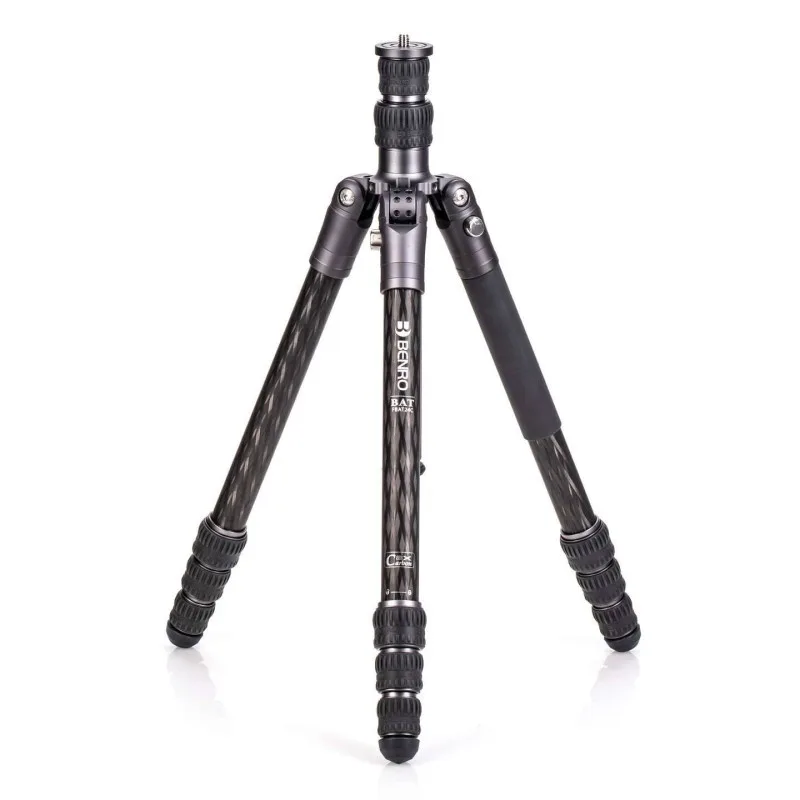
Benro is a venerable name in the tripod game, and the Tortoise line in particular is interesting because it usually omits the center column for maximum stability.
The result is an ultra-compact folded length with no “extra” column bits in the way.
The Travel Angel, on the other hand, includes a short center column that folds up with the legs for easy stowage.
Either line can be a superb solution for a pro photographer who wants minimal weight but pro-level stability.
- Weight Range: 2.8-3.5 lbs (1.27-1.58 kg), typically.
- Load Capacity: Usually 20-30 lbs (9-13.6 kg) on paper—plenty for most DSLR or mirrorless rigs. Real-world capacity is typically stable for 10-15 lbs (4.5-6.8 kg) of gear if you want to keep things rock solid.
- Heads: The GH or VX series ball heads often have dual panorama controls (one at the base, one near the clamp), which is a big plus if you stitch multi-row panoramas.
- Price Range: $180-$400, depending on the model and whether it’s carbon fiber or aluminum.
Real-World User Note
Some users mention that the Tortoise series is about as stable as higher-end tripods from more expensive brands, and that it’s “incredibly compact” for the stability you get.
If you never raise a center column anyway, Tortoise might be your best friend. If you do want those extra inches occasionally, you might prefer the Travel Angel or a separate short column accessory.
Either way, these are pro-level, for sure.
4. Travel Tripods for Professional Filmmakers & Videographers
When it comes to serious video production—especially if you have a cinema camera rig, or you’re capturing telephoto shots of wildlife, or you just want that super-smooth panning motion—ordinary travel tripods with basic ball heads won’t cut it.
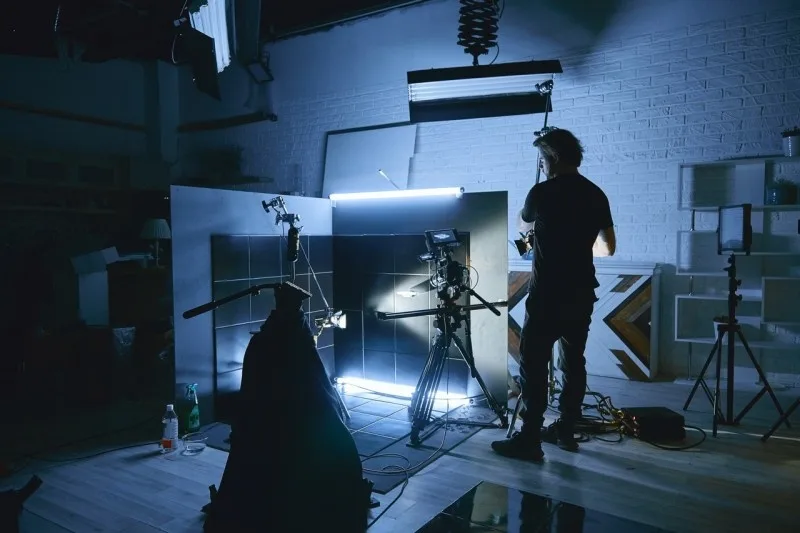
You’ll likely need a dedicated fluid head or at least a fluid-drag system.
That said, lugging around a giant set of sticks with a 75mm or 100mm bowl can be daunting if you’re traveling on foot or taking flights.
Let’s see which tripods straddle that line between pro video performance and some level of travel friendliness.
iFootage Gazelle/Komodo Series
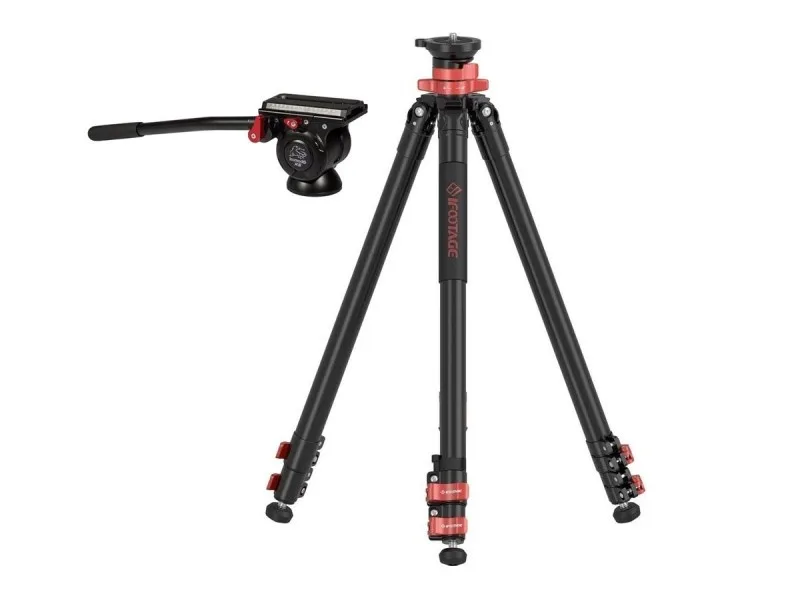
Many pros love iFootage for quick setups, intuitive leveling bowls, and fluid heads that are actually quite smooth for their size.
The carbon fiber variants keep weight down, sometimes around 3.5 to 4.5 lbs (1.58-2.04 kg) for the legs.
Pair that with an iFootage Komodo head or similar fluid head, and you can get legit cinematic movement in a smaller package than a typical broadcast tripod.
- Why It’s Great: Quick level bowl means you don’t have to individually adjust each leg to maintain a level horizon. That’s crucial in run-and-gun video or documentary scenarios.
- Spiked + Rubber Feet: Often included or easily swappable, letting you anchor on diverse terrain.
- Load Capacity: Enough for heavier mirrorless rigs or small cinema cameras. If you’re using a giant lens or rig, consider stepping up to their bigger models, though you lose some travel “compactness.”
Pro Tip: If you want ultra-smooth pans at moderate focal lengths (e.g., 70-200mm), check the damping settings on your fluid head.
Some iFootage heads have adjustable friction so you can dial in the movement.
This helps for filming sports, interviews, or nature docs on the go.
Sachtler Ace and Flowtech
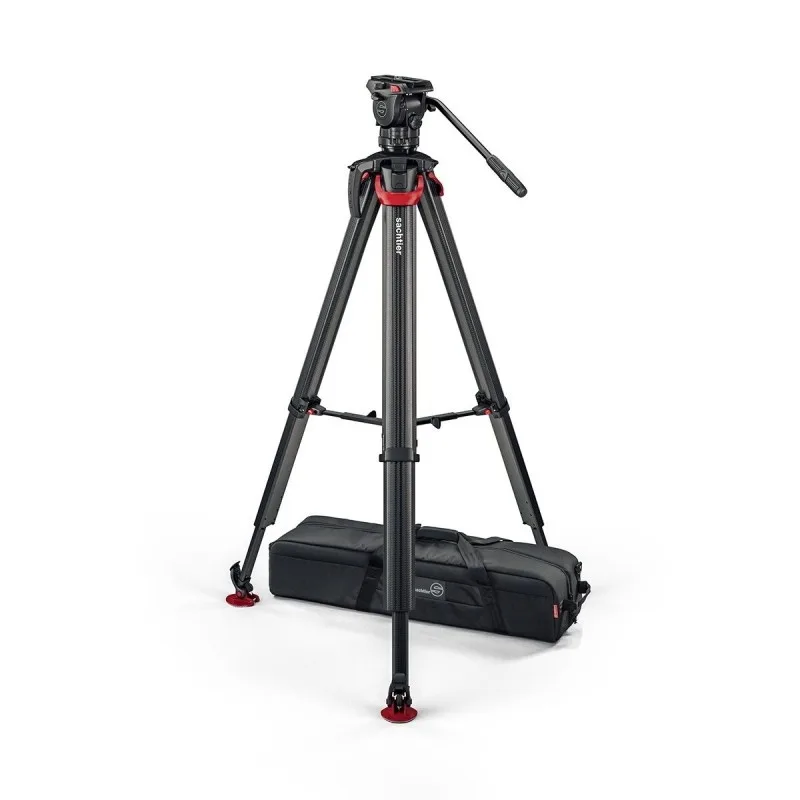
Sachtler is big in the professional broadcast and film world.
Their Ace line or Flowtech legs are often the gold standard for quick deployment, robust build, and smooth fluid heads.
Now, these are bigger, heavier, and pricier than your average “photo travel tripod.” But some traveling pros still choose them for the reliability.
Flowtech legs are extremely fast to set up—just flip the leg locks near the top, and the entire leg extends.
That’s a dream for docu-style videography when you have to move fast.
- Weight: Typically 6-8 lbs (2.7-3.6 kg) for legs + head, which is heavy for an average traveler, but can be worth it if you shoot professional video.
- Height Range: Usually up to around 60 inches (152 cm) or more. Great for interviews or comfortable eye-level shots.
- Quality: The fluid heads are known for extremely stable pans/tilts with selectable drag. You’ll get that pro look.
- Downside: Definitely not as easy to fit in a small carry-on or backpack. Many pros end up checking it in a dedicated tripod case or carrying it on the side of larger luggage.
Verdict: If you do serious filmmaking or you need advanced fluid movement (like for following fast action or filming sports/wildlife with 400-600mm lenses) and you can handle the extra weight, a Sachtler Flowtech is worth it.
For lighter setups or if you’re traveling by plane frequently, iFootage or an Ulanzi/Coman fluid head tripod might be more practical.
Ulanzi/Coman Heavy-Duty Fluid Head Tripods
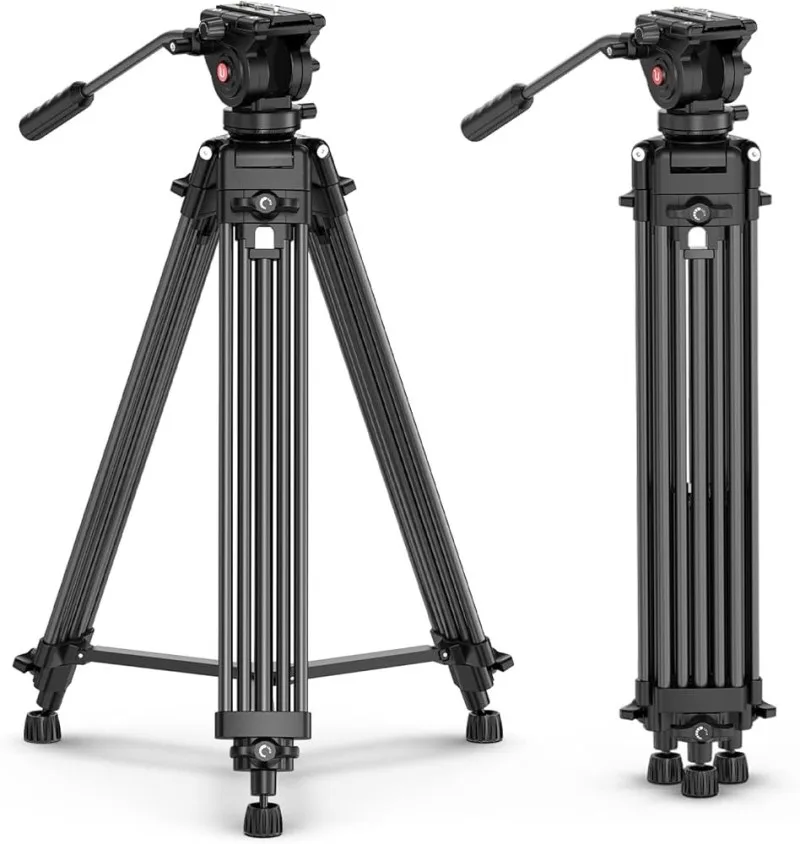
While many Ulanzi or Coman tripods target casual users, they also produce heavier-duty variants with small fluid heads.
These aren’t in the same league as Sachtler or Miller, but they can be a great middle ground for videographers on a budget who still want decent panning.
The price difference can be significant.
You might find something in the $150-$250 range that can handle an 8-10 lb (3.6-4.5 kg) camera kit with passable smoothness.
Perfect if you do occasional professional gigs or advanced hobby filming and want something more portable than typical broadcast sticks.
Common Pitfalls and How to Avoid Them
Now that we’ve covered recommended tripods, let’s do a quick check on pitfalls many travelers encounter.
Reading user experiences, the same issues pop up repeatedly: lost quick-release plates, rattling center columns, fiddly locks, or unexpected camera droops.
The best way to avoid such headaches is to know where corners are often cut and do basic maintenance.
Let’s look at a few trouble spots and solutions.
1. Rattling or Wobbly Center Columns
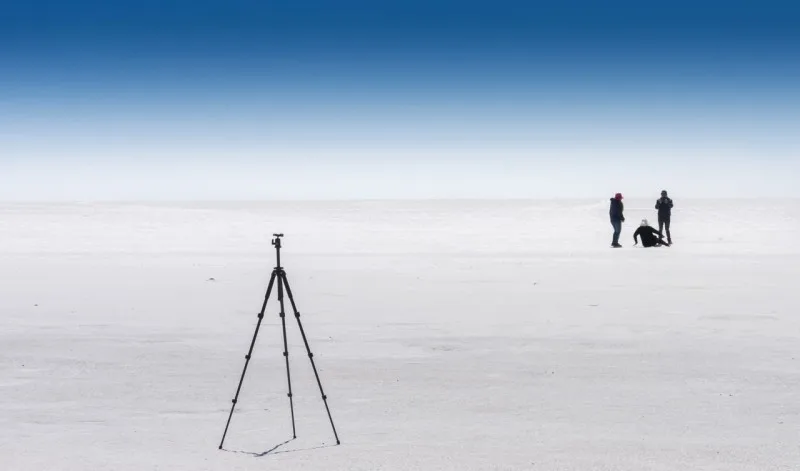
Some cheaper tripods have center columns that don’t lock securely or come with a little accessory tool that rattles inside.
This can lead to minor vibrations or an annoying sound if you’re hiking.
If you plan to walk around a lot with your tripod attached to your bag, check the column for tightness and see if the included accessory can be stowed more securely.
If not, consider removing it and storing it in a separate pouch until you need it. In many carbon fiber tripods, the center column is triangular to minimize rattling and maximize the leg “hug.”
That’s part of the design you see in premium tripods like Peak Design’s.
2. Quick Release Plate Incompatibilities
A common complaint is that certain “Arca Swiss” plates still don’t fit well in all Arca clamps.
The standard can vary slightly by manufacturer.
For instance, some folks with a third-party L-bracket find it slides around on a particular brand’s clamp or that it can’t seat properly.
Always test your plate and clamp combination at home—don’t discover the mismatch in the field. If the clamp is tension-only (no safety pin), be extra careful about accidental slippage.
Many prefer a quick-release system that also has a lock or safety catch built-in.
3. Over-Reliance on Maximum Capacity Claims
Many tripods advertise “holds up to 22 lbs!” or “Rated for 30 lbs!” But real-world usage at 70% of that rating can already feel shaky—especially with the center column extended.
If you know your gear weighs 6 lbs (2.72 kg), look for a tripod rated at 15-20 lbs (6.8-9.07 kg) or more to build in a safety margin.
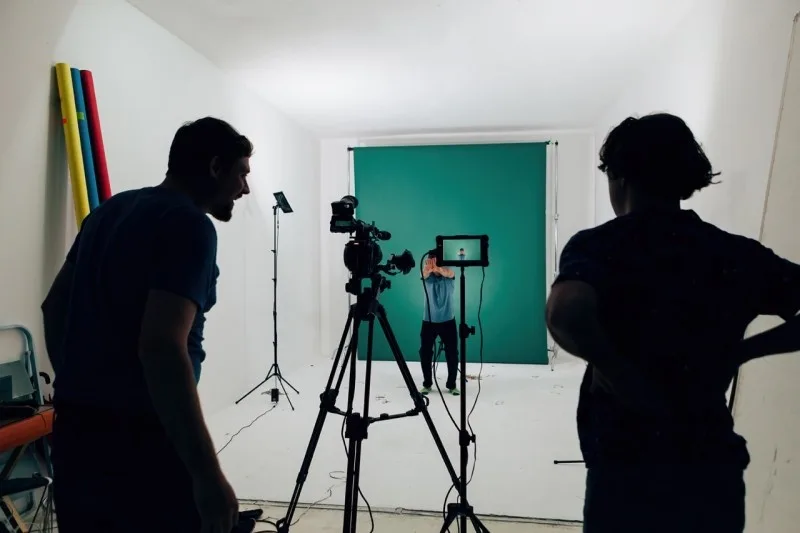
Or you might need to keep the legs at lower segments and skip the center column.
This is especially crucial for telephoto lenses, where any small vibration is magnified at long focal lengths.
4. Neglecting Maintenance
If your trip takes you to beaches, deserts, or anywhere with dust, sand, or saltwater, your tripod’s locking mechanisms or center columns can get clogged.
Some folks have had their leg sections slip out unexpectedly after building up dirt.
You should periodically wipe down the legs, especially the lower segments, and possibly remove the locks if the brand allows easy disassembly.
A bit of silicone lubrication (if recommended) can keep things smooth. Avoid WD-40, as it can attract more dirt in the long run.
5. Ignoring the Need for a Fluid Head (If You Shoot Video)
A typical scenario: a photographer invests in an awesome ball head travel tripod, then tries to shoot a video interview or cinematic pans.
The footage ends up jerky.
Don’t assume a standard ball head can do fluid panning, because it can’t.
If you shoot real-time video often—even as an amateur—think about a small fluid head or a hybrid ball head with a fluid drag feature.
Then you’ll get that polished look without messing up your travel-friendly size or weight.
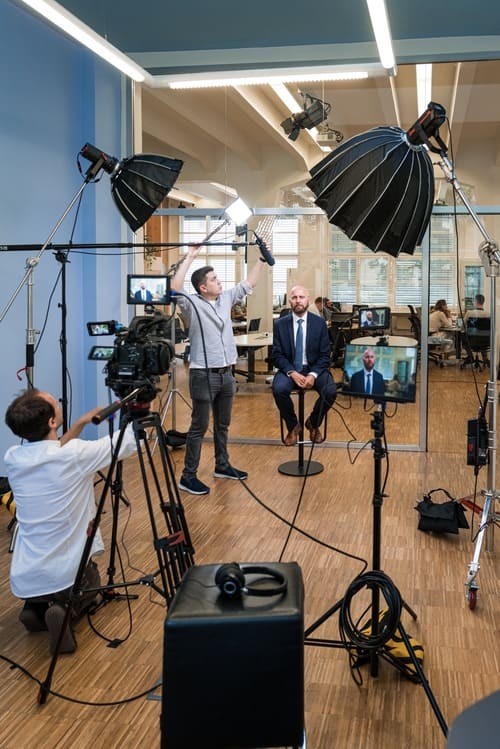
Detailed Feature Comparisons: Going Even Deeper
Next, let’s get into more detail on some specific aspects so you can compare tripods more thoroughly.
This section is for those who like the nitty-gritty.
I’ll talk about typical weights, heights, and pros/cons for sample models that often show up as “best picks.”
This helps you see where they land if you’re on the fence between, say, a Peak Design Travel Tripod and a Sirui or Benro model.
Weight and Folded Length: Representative Examples
- Peak Design Carbon: ~2.8 lbs (1.27 kg) total, ~15.5 in (39.4 cm) folded. Great for carry-on. The triangular center column is an engineering marvel but the custom head can feel limiting for advanced video movements.
- Ulanzi & Coman Carbon: ~2.4-2.6 lbs (1.09-1.18 kg), ~16 in (40.6 cm) folded. Cheaper alternative that’s somewhat similar in design but can be just as stable if used properly. The head is easier to adapt to a universal clamp system in some cases, but watch for plate rattling in older models.
- Sirui 254 + K20 Ball Head: ~3 lbs (1.36 kg) total, ~17 in (43 cm) folded. Heavier but with robust build. Great friction control on the head, stable in moderate wind. Good for telephoto or low-light shots.
- Benro Tortoise 14C / 24C: ~2.8 lbs (1.27 kg), ~17-18 in (43-46 cm) folded (without head). No center column (for some models), so it packs small. If you add a fluid head, the total might go 3.5 lbs (1.58 kg) or more. Great stability for its size, though.
- iFootage Gazelle TC5: ~3.4 lbs (1.54 kg), ~21 in (53 cm) folded, but has a 75mm half bowl for easy leveling. Attach a Komodo K5 fluid head, and you have a 4.5-5 lb (2.04-2.27 kg) total system. Extra weight, but also extra versatility for video.
Lock Mechanisms and Adjustability
Quite a few travelers prefer flip locks for quick visual confirmation—just snap all open, extend the legs, snap them closed.
Twist locks can require a bit more practice, especially if they aren’t high-quality.
But some advanced twist locks from Leofoto or Gitzo have a half-turn open/close action that’s very fast.
Meanwhile, Sachtler’s Flowtech system uses top-located levers you can open at once for all sections, which is extremely efficient, though heavier than typical travel tripods.
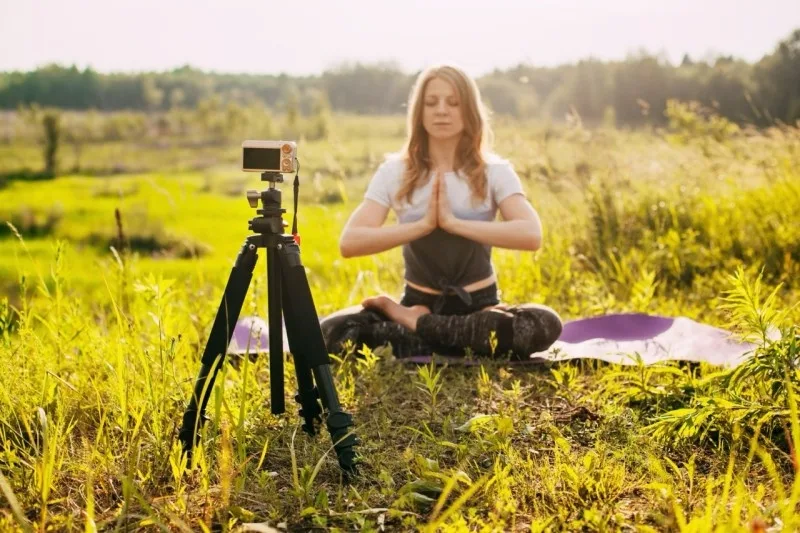
You may also see user reviews about clip tension.
On some budget tripods, the flip locks aren’t adjustable, so if they loosen over time, there’s no easy fix.
Premium tripods often have a small Allen key or screw so you can tighten them back to full grip.
This is crucial for longevity.
Center Column Designs: Standard vs. Reversible vs. Short vs. No Column
A center column can add height quickly but also can introduce more vibration—particularly if you’re using a heavier camera or you’re in windy conditions.
Some tripods have a reversible column you can flip for macro or low-to-the-ground shots. Others skip a center column entirely (like the Benro Tortoise) to maximize stability and reduce folded length.
Which is best? For everyday travel photography, a short center column or a column that’s easily removable can be the sweet spot.
That way, you can go tall if you need to but easily remove or shorten it if you’re after maximum steadiness or close-to-ground angles.
Heads: Ball Heads vs. Hybrid Heads vs. Full Fluid Heads
Professional filmmakers lean toward fluid heads, but these are heavier.
If you only shoot photos, you might prefer a ball head for quick framing.
Some new “hybrid” heads incorporate a mini fluid system for smoother pans while retaining the smaller form factor of a ball head.
A perfect example is some “video-friendly ball heads” where you can lock tilt but keep pan fluid.
Many travel photographers find these heads handy if they dabble in short clips or want easy panorama stitching.
With full fluid heads, look for a counterbalance system that matches your camera weight.
If your rig is too light, you might constantly fight the head’s tilt tension. If it’s too heavy, you may exceed the head’s capacity.
For travel, something like the iFootage Komodo or Manfrotto MVH500AH is a popular smaller fluid head, but the latter might be a bit big for a super compact carbon set of legs.
Handling and Aesthetics
Influencers and on-the-go shooters might care a lot about sleekness.
Peak Design obviously capitalized on that “it’s so slim, I can grip it with one hand.”
Others, like the Sachtler Flowtech, look more industrial, but also set up faster in many cases.
If you do daily vlogging, you might want the minimal diameter that doesn’t snag on your bag. If you do documentary work, you might want bigger, chunkier legs you can deploy quickly and trust on rough terrain.
Don’t be afraid to pick form vs. function based on the style of shooting you do most often.
Care and Maintenance: Making Your Travel Tripod Last
A good travel tripod can be an investment—especially if you go carbon fiber.
Taking the time to maintain it will help you avoid leg slippage, corroded screws, or gummed-up locks that fail at inopportune moments.
Below are a few steps to keep yours in prime shape, whether you’re traveling the world or just crossing town.
1. Clean It After Sandy or Muddy Shoots
Sand is the enemy of telescoping legs and locking systems.
If you shoot at a beach or desert, rinse or wipe the lower legs as soon as possible.
Let them dry thoroughly before collapsing them to prevent grit from scraping the inside tubes.
Similarly, if it’s muddy, do a quick wipe with a damp cloth, then re-extend them at home to ensure it’s fully dry inside.
2. Tighten Lock Screws Periodically
For flip locks, there’s often a small Allen bolt you can turn to restore the tension.
For twist locks, in some designs you can unscrew them to remove any dirt and apply a small dab of grease or silicone.
Check your manual; some tripods come with a specialized tool or even store that tool in the center column hook or a hidden compartment.
This prevents your locks from loosening over time, which can lead to unstable legs or entire sections falling out.
3. Protect Metal Parts From Corrosion
If you’re dealing with salt air (ocean environments), wipe down any metal segments, washers, or screws to keep them from rusting.
Even carbon fiber tripods have metal screws and fasteners.
A quick rinse in fresh water after a saltwater environment can save you from jammed or corroded parts.
4. Store It Correctly
When traveling, you might just lash the tripod to your bag.
That’s fine, but keep it from banging around too much.
If you can put it in a tripod bag or the side pocket of a backpack, that’s usually safer. Prolonged banging can weaken locks or cause scuffs that degrade performance over time.
If you’re flying, consider removing the head and storing it separately so the overall shape fits better in luggage, and to protect knobs from snapping off if the bag is tossed around.
5. Don’t Overtighten the Head
If you frequently swap heads (e.g., from a ball head to a fluid head), be mindful not to cross-thread or over-tighten.
Some cameras or quick-release plates can slip if not securely attached, but over-torque can also damage threads.
A gentle but firm approach is best.
For advanced heads with rosette-based handles, keep track of any washers or small screws so you don’t lose them mid-trip.
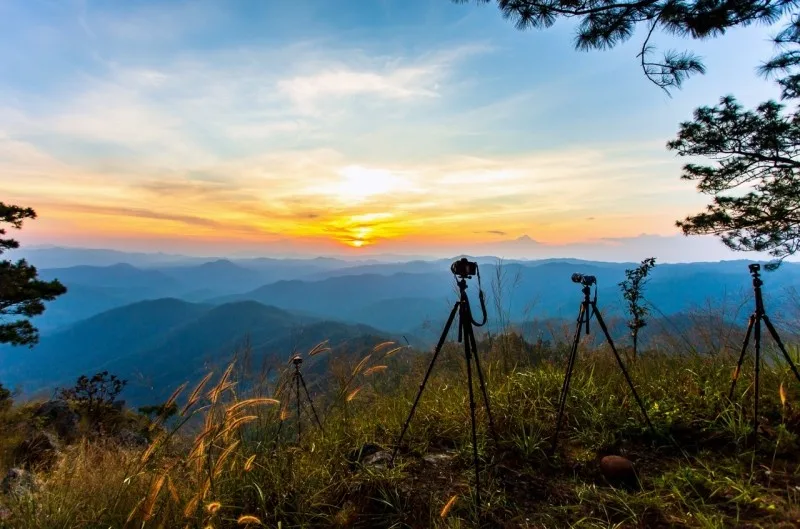
Practical Setup Tips for Field Use
Even if you have a high-quality travel tripod, knowing how to set it up quickly and properly can save you from missing shots or fumbling in front of a client.
Let’s go over some best practices—especially relevant if you do vlogs or run-and-gun video in unpredictable locations.
1. Deploying Legs Quickly
With flip-lock systems, you can open all locks on one leg with a single pull of your hand.
Pull out the sections, then close them in a quick rolling motion.
Twist locks can be similarly fast if they’re designed for half-turn or one-turn operation.
Once you get the hang of it, you can go from folded to fully extended in under 10 seconds.
Practice at home, so you’re confident on location.
2. Avoid Extending the Thinnest Leg Section First
In general, if you only need a bit more height, don’t extend the lowest (thinnest) segments.
That’s where most instability arises.
Instead, use the top (thicker) sections, and only raise the center column if absolutely necessary. This approach dramatically improves stability for heavier cameras.
3. Leveling the Base (Especially for Video)
Some tripods have a bubble level on the shoulders or the head.
For photography, you might rely on your camera’s built-in level.
But if you’re panning for video, or doing multi-shot panoramas, a perfectly level base is crucial.
If you don’t have a bowl system for easy leveling, you can tweak leg lengths until your bubble indicates flatness, then lock them in.
4. Switching Quickly from Landscape to Portrait (for Influencers)
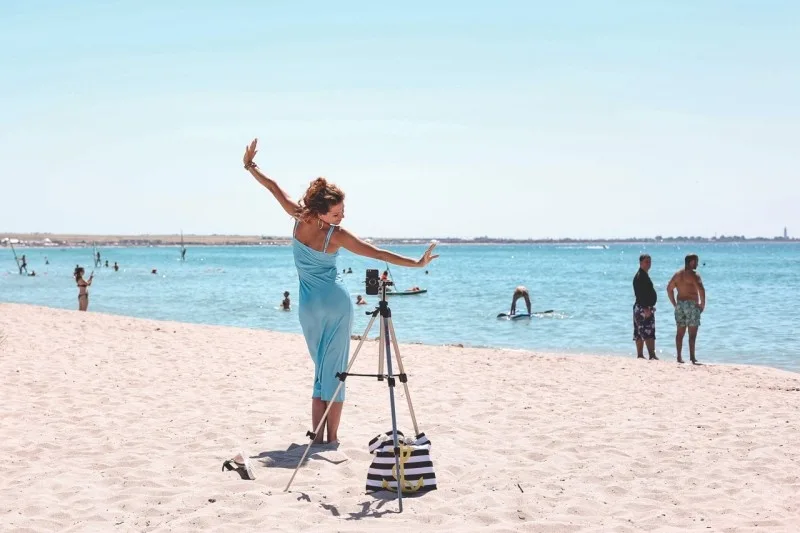
Influencers often jump between horizontal (YouTube) and vertical (TikTok/Instagram) formats.
A tripod with a dedicated side notch or a fluid head that tilts 90° helps.
Some ball heads have two cutouts for this exact reason.
Just watch out for cameras with heavy lenses swinging dangerously if the head tension is too loose.
If vertical is crucial, consider an L-bracket or head that can quickly pivot the camera without losing your center of gravity.
5. Use the Bag Hook
If your center column has a hook, hang your camera backpack or a small weight for added stability, especially if you’re dealing with breezes or uneven ground.
This technique can turn a mid-range travel tripod into a rock-solid platform.
Just ensure the bag can swing a bit without hitting the legs—some people attach the bag with a short bungee or keep it just off the ground to reduce sway.
FAQ: Your Travel Tripod Questions Answered
Throughout my conversations with fellow creators—amateur to pro—certain questions come up time and again.
Let’s tackle a few more of those here in more detail.
1. Can a Single Travel Tripod Serve Both Photo and Advanced Video Needs?
In many cases, yes—if you’re willing to either swap or compromise on the head.
For advanced video moves (like long, smooth pans with heavier setups), you’ll ideally want a fluid head that has adjustable drag.
This can be heavier.
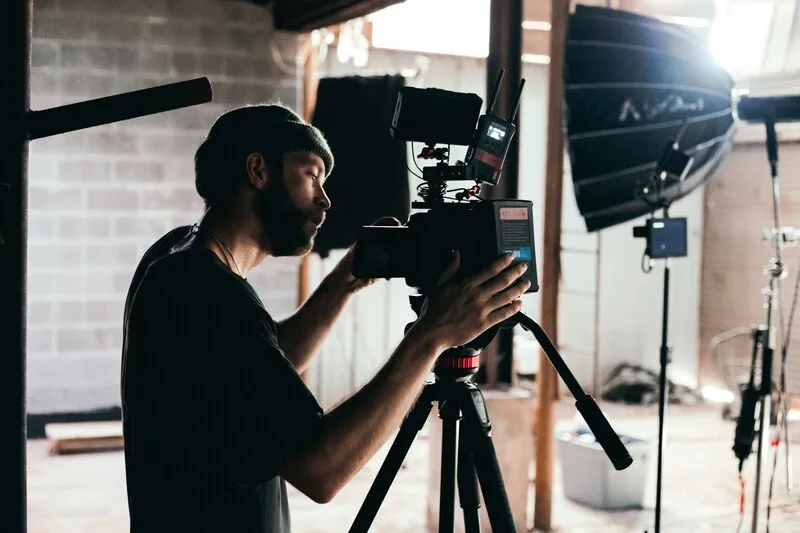
Some travelers carry a small ball head for stills and a separate mini fluid head for video.
Just keep in mind you’ll have to mount/unmount heads unless you find a “hybrid” solution that genuinely meets your smoothing requirements.
2. Is a Tripod Still Worth It If I Have IBIS (In-Body Image Stabilization) or OIS (Optical Image Stabilization)?
Definitely.
While stabilization in the lens or camera body helps with small shakes, it can’t replace the rock steadiness needed for long exposures, astrophotography, or perfectly smooth multi-second pans in video.
Even for short exposures, a tripod opens creative possibilities like slow shutter panning, bracketed HDR sets, or stable timelapses.
You can’t do those as reliably handheld, no matter how good your camera’s internal stabilization is.
3. What’s the Ideal Folded Length for Air Travel?
This depends on your airline’s overhead bin size and your carry-on bag dimensions.
Many travelers say anything under 18 inches (46 cm) folds well diagonally in standard carry-ons. Some tripods are as short as 14-15 inches (36-38 cm) folded, which is extremely convenient.
If your tripod is around 20+ inches (51+ cm) folded, you might have to put it in checked baggage, a separate tripod bag, or attach it externally to a backpack.
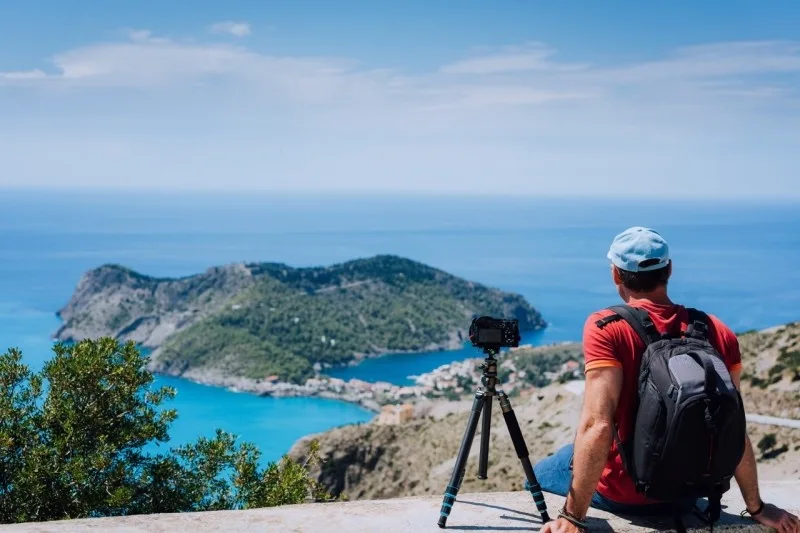
Check rules for your specific airline—they rarely ban tripods, but length might be a concern for overhead compartments on small planes.
4. Should I Invest in Carbon Fiber Right Away?
If budget isn’t a huge constraint and you prioritize lighter weight and improved vibration damping, go for carbon fiber.
It’s a worthwhile investment that can last years.
However, if your budget is tight, an aluminum option can be more than fine—just a bit heavier.
For amateurs or casual vlogging, saving those extra dollars could make sense unless you must keep your kit as light as possible (like if you’re backpacking across mountains or traveling with strict weight restrictions).
5. Do I Need a Monopod Feature?
Some tripods let you unscrew a leg and convert it into a monopod.
This can be handy in event photography or sports, where you need quick repositioning.
It’s also useful if you’re on a hike and want occasional support for panning wildlife shots but don’t want to set up the entire tripod.
However, if you rarely see yourself using a monopod, it might just be a feature that never gets used.
Consider your shooting style carefully before paying extra for that feature.
6. What About Maintenance on a Fluid Head vs. a Ball Head?
Ball heads are simpler, with fewer external moving parts, though you should still keep the ball area clean of sand and grit.
Fluid heads can have internal fluid cartridges, rosettes for the pan handle, and more intricate locks.
Wipe them down, store them carefully, and follow the manufacturer’s instructions for lubrication or cleaning.
If you see any sign of fluid leaks or strange friction changes, investigate quickly—fluid heads can be more expensive to repair if damage goes unchecked.
7. Do Professional Filmmakers or Photographers Use “Travel Tripods” Professionally?
Yes, but typically for specific scenarios.
If you’re a wedding shooter who’s running between ceremony spots and want something quick to pop open for bride/groom portraits or stable video details, a carbon travel tripod with a fluid head can work wonders.
Landscape pros might use a heavier standard tripod for local shoots but switch to a top-tier travel tripod (like Gitzo, RRS, or Sirui) on multi-day hikes or flights abroad.
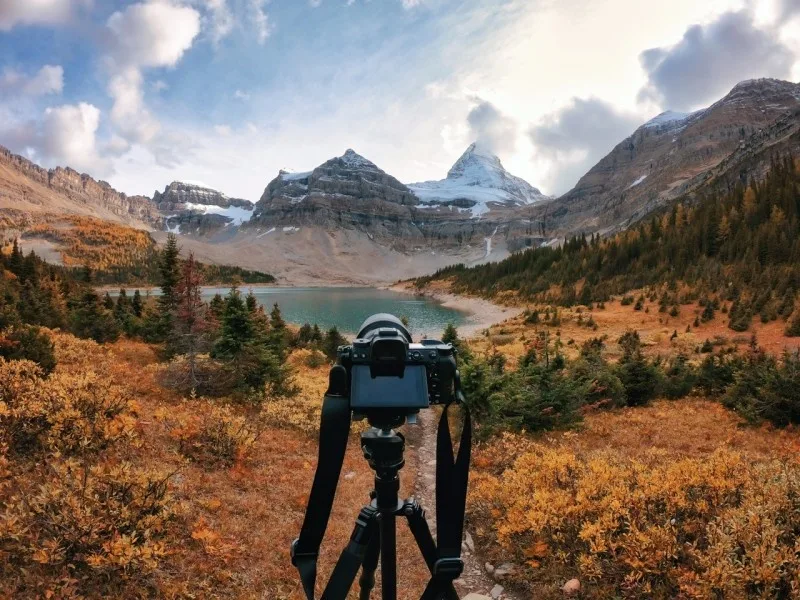
Documentarians and indie filmmakers might choose iFootage or Sachtler’s lighter lines for portability.
So absolutely—“travel” doesn’t always mean “amateur,” it just means you’re balancing weight, size, and performance.
Key Takeaways: Which Category Are You?
It’s helpful to see a quick summary of which models or categories best fit your typical usage. If you’re still unsure, read on:
Amateur Photographers:
Check out budget-friendly yet reliable options like Neewer or ULANZI MT series.
They’re perfect for static shots and occasional simple video.
If you only have a kit lens or smaller telephoto, these can handle it without too much fuss.
Amateur Videographers:
Grab a Manfrotto BeFree Live or a ULANZI with a mini fluid head.
You’ll have a better chance of capturing smooth pans for short video content.
Just keep an eye on the total load capacity, especially if you add lights or external monitors.
Influencers, Vloggers, and TikTokers:
The Peak Design Travel Tripod or Manfrotto BeFree remain top choices.
They’re stylish, easy to pack, and deploy quickly.
If you often film yourself, look for a built-in phone mount or add an Arca Swiss phone clamp for vertical content.
A small fluid head might help if you do more advanced motion, but in many cases the quick ball head for angle changes is enough for daily content creation.
Professional Photographers:
If you’re fussier about stability for long exposures or big lenses, look at Sirui 254 or Benro Tortoise or Leofoto LS series.
They’re robust, easy to maintain, and can handle heavier setups without the dreaded leg creep or droop.
For windy or low-light work, weigh them down via the center column hook, or consider a model without a center column for improved rigidity.
Professional Filmmakers:
Check out iFootage Gazelle/Komodo combos or Sachtler Ace/Flowtech if you can handle the size/weight.
These lines incorporate true fluid heads for silky-smooth moves, plus stable legs that can endure the rough conditions often found in documentary or commercial shoots.
If you’re trekking a lot, you might lean toward iFootage’s lighter sets.
If you’re okay with checking a heavier bag, Sachtler’s Flowtech or bigger Ace combos might be unstoppable in pro usage.
Conclusion: Finding Your Perfect Travel Tripod
A travel tripod is often one of those pieces of kit you might initially think is a luxury—until you realize how crucial it is for capturing stable photos or smooth video in all sorts of unpredictable scenarios.
Whether you’re traveling abroad, heading to a national park, or simply filming around your neighborhood, a well-chosen tripod can truly elevate your work.
It can open up creative techniques like nighttime long exposures, timelapses, and even crisp telephoto wildlife shots in less-than-ideal conditions.
As we’ve explored, it’s all about matching your tripod’s capabilities with your shooting style and gear load.
Amateurs can opt for simpler, budget-friendly stands that still fold compactly and hold smaller cameras well.
Influencers often want the fastest setup or something that can handle both horizontal and vertical formats for social media.
Pro photographers shooting heavier gear or requiring advanced stability might lean on reputable brands like Sirui, Benro, or Leofoto.
And if you’re a serious filmmaker, iFootage and Sachtler might be your best bet—though you’ll pay in both dollars and weight for that top-tier fluid motion.
No matter which category you fall into, pay attention to the fundamentals: material, lock mechanism, load rating, and the head design.
Confirm that the tripod meets your real-world usage.
If it’s mostly for locked-off shots of family gatherings, you don’t need to spend a fortune.
If you’re capturing swirling ocean waves at sunset with a 400mm lens, you’ll need a sturdier system.
A small difference of half a pound (0.23 kg) or an extra two inches (5 cm) of folded length can matter a lot if you’re carrying the tripod all day or trying to stow it on flights.
And always remember to weigh it down or keep the center column low if conditions get windy—simple tips that go a long way in boosting stability.
Lastly, don’t forget to maintain your tripod.
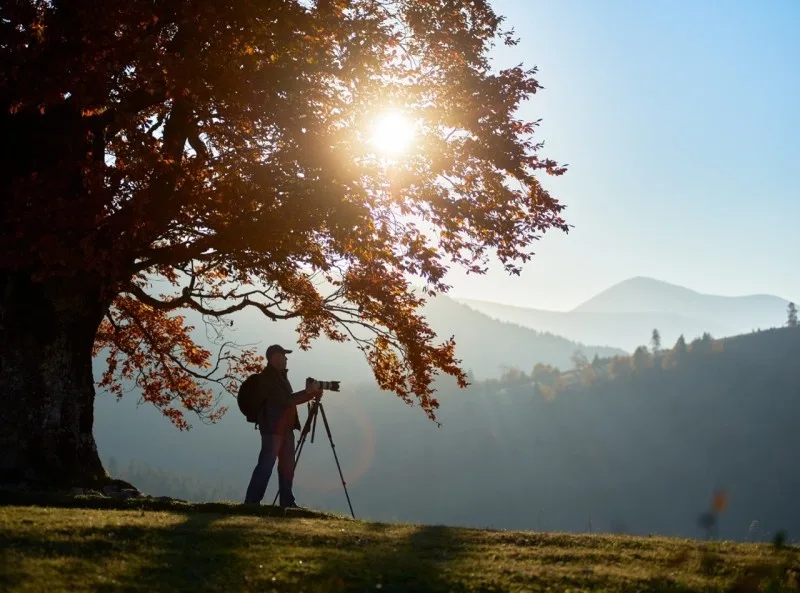
A quick post-shoot cleaning can significantly extend its lifespan.
Keep an Allen key or the included tension tool handy to tighten flip locks or clamp knobs over time.
With proper care, a quality travel tripod can last many years, traveling with you from city skylines to mountaintops.
Hopefully, this deep dive has helped you narrow down the best travel tripod for your 2025 needs—happy shooting, and may your footage be shake-free!

